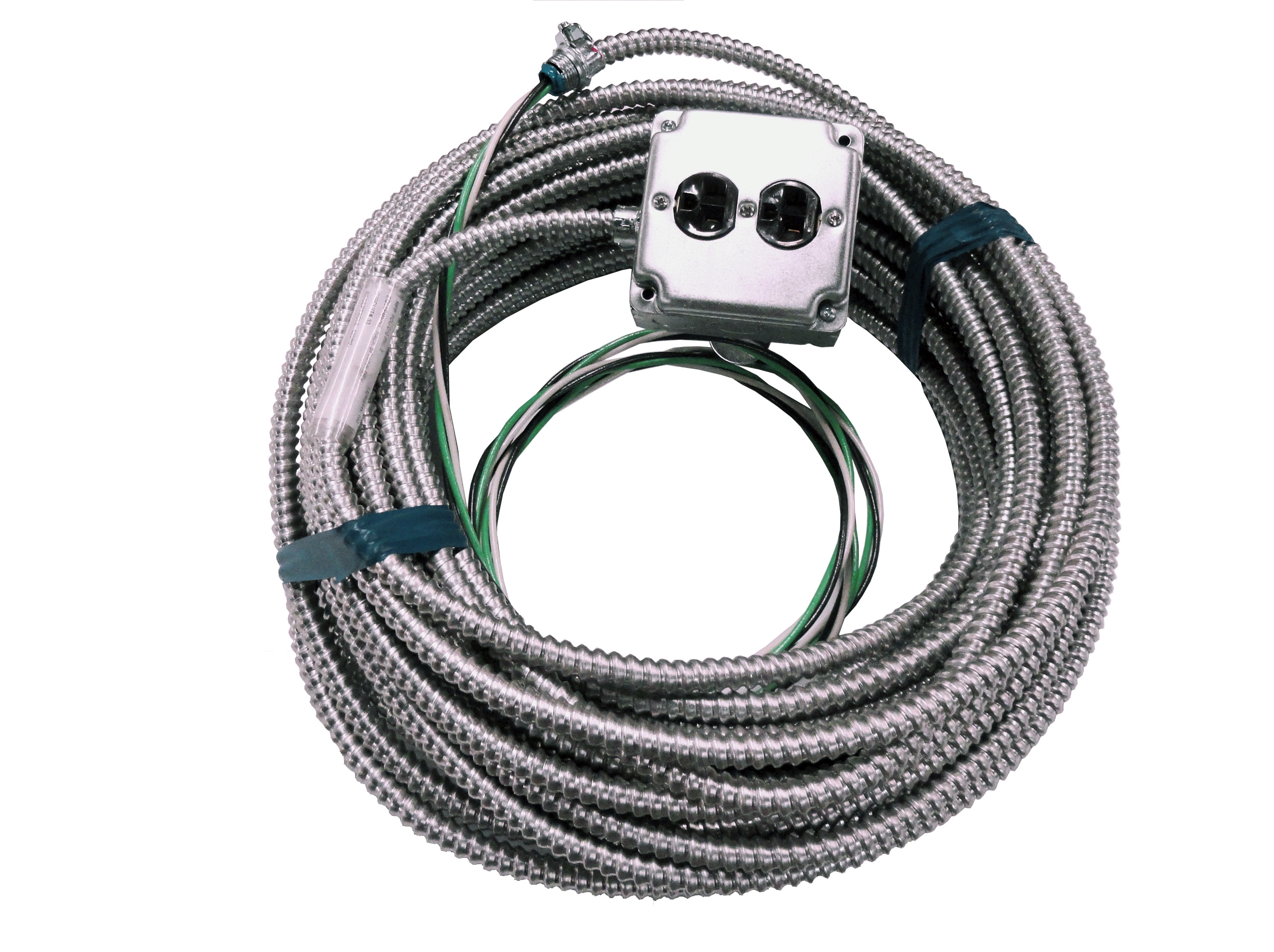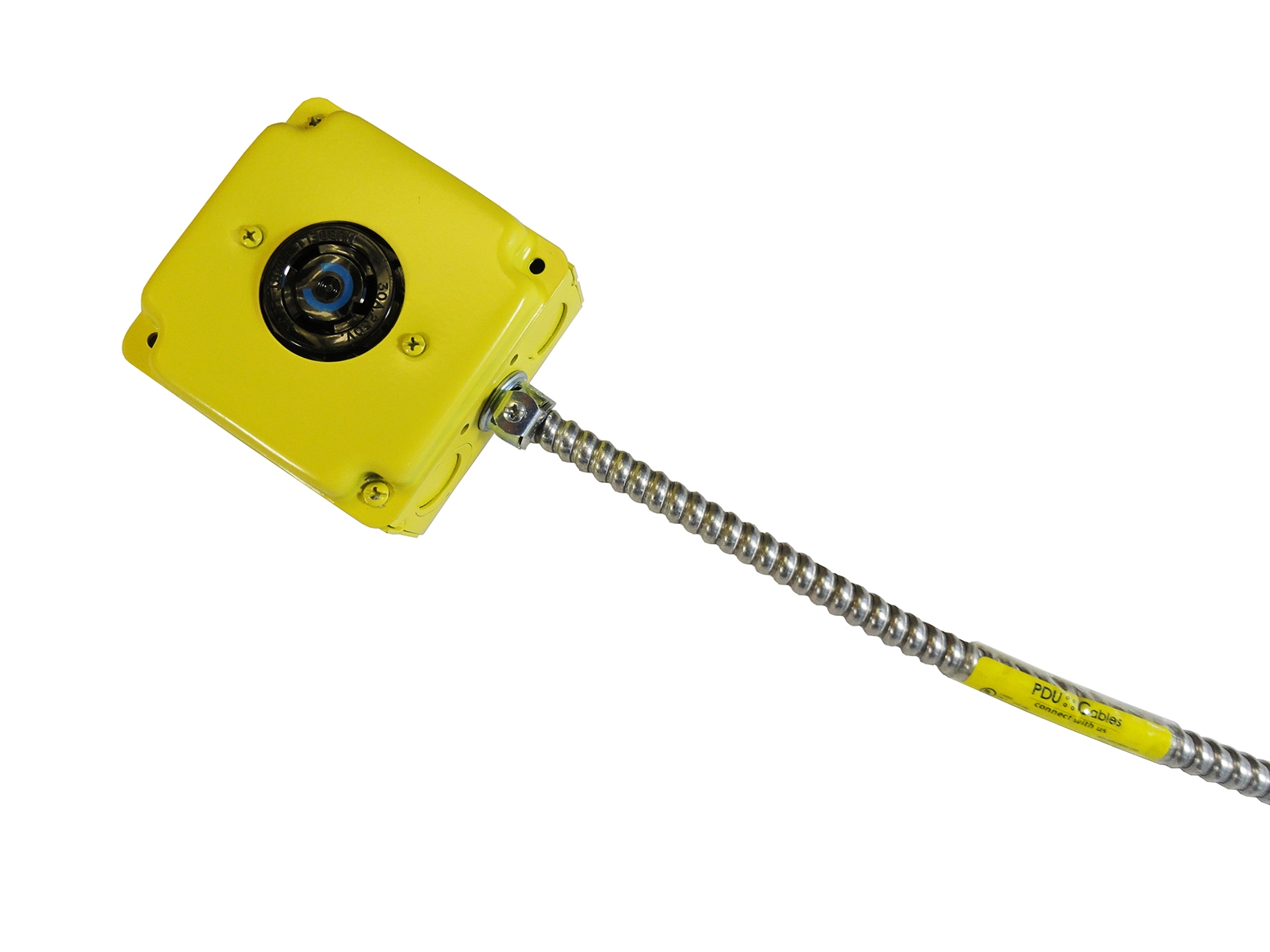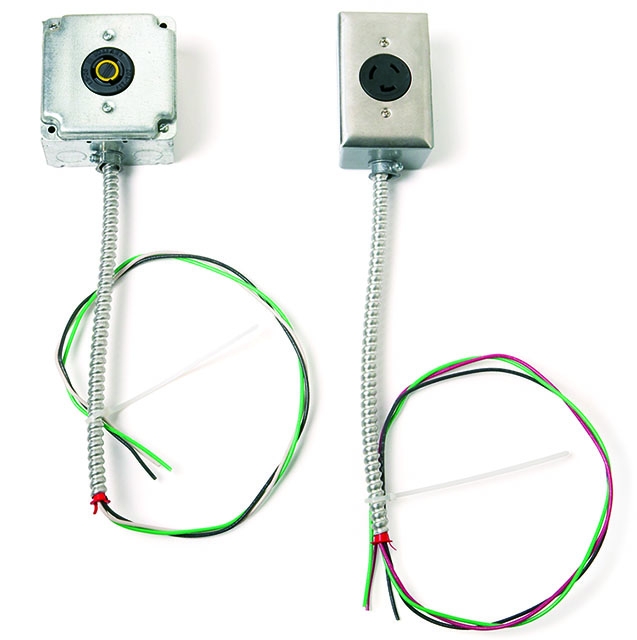MC Cable
Type MC (Metal Clad) Cable Assemblies
(NEC Article 330) – Metal Clad cables are assemblies of one or more insulated circuit conductors with or without optical fiber members enclosed in an armor of interlocking metal tape, or a smooth corrugated sheath. A plastic overall jacket can also be provided.
Pro’s:
- Smaller outer diameter
- Lighter weight
Con’s:
- Risks in manufacturing process
- Limited standard conductor color options
- Lacking conduit color options
- Limited labeling options
- Dirty jacket residue
In appearance type MC cables are very similar to type AC cables (armored clad). It is important to differentiate the two as they should not be confused. Type MC cables contain an equipment ground conductor while type AC cables have an internal bonding strip in contact with the armor. More importantly type MC cables are suitable for outdoor use while type AC cables are not permitted for outdoor use (wet or damp locations).
Type MC cables are widely used in 600 volt and MV power, lighting and fixture whip control applications. They are permitted for use on services, feeders and branch circuits for power, lighting, control and signaling circuits in accordance with Article 330 and 725 of the NEC. Type MC cables may be installed indoors or outdoors, in wet or dry locations, hazardous locations (Class I, Division I), in cable tray, as aerial cable on a messenger, in any approved raceway, direct burial (where identified), or encased in concrete (where identified). MC cables are not permitted to be installed where subject to physical damage. MC cables must be supported and secured at intervals not exceeding six feet.
In many industrial application type MC cables, routed in cable trays, have proven to be an excellent economic alternative to wire in conduit.
When electrical wiring needs extra protection, metal-clad (MC) cable is a great solution and is often required by electrical codes. MC cable is easier to work with than rigid conduit, and it too offers protection from fire, vibration, gnawing pests and physical harm in general.
Metal-clad cable comes in several varieties, with the most common type being three insulated wires (two circuit conductors and a green equipment grounding conductor) protected by a flexible armor usually made from aluminum. MC cable is identified by the gauge of the wire, not the diameter of the armor. The most common sizes are 14-gauge, 12-gauge and 10-gauge.
Following are a few photo's of different Type MC (Metal Clad) Cable Assemblies.

Type MC (Metal Clad) Cable Assembly

MC Cables with yellow box and conduit label

Pair of Metal Clad Cable Assemblies
